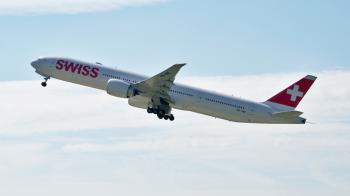If we are to believe Deloitte’s 2017 survey of the Swiss watch industry, conducted between May and July among 60 senior executives in the sector and 4500 watch customers in China, Italy, Germany, Japan, Switzerland and the United States, the worst could be behind us. Whether we can expect a return to the glory years is another question entirely, but economists know only too well that it’s better to grow than to be eaten alive. Here are five figures that may help to convince the more nervous travellers.
5 billion Swiss francs’ worth of watches were exported in the second quarter of 2017, compared with 4.8 billion over the same period in 2016. This is the first sign of growth after 20 consecutive months of decline. We shall see if results over the holiday period confirm the trend.
3% increase (in both volume and value) in mechanical watch exports for the first half of 2017, compared with the first half of 2016. After the 2% decline (value and volume) in 2015, and the 10% slump (value and volume) in 2016, this uptick should keep industry executives in their business class seats for a while longer. It’s not all good news, however: quartz watch exports have still not rallied. The luxury market remains the sector’s main driver.
52% of industry executives polled professed to be “optimistic” about the economic outlook for Swiss watchmaking for the next twelve months. It’s a welcome change of heart, given that at the same time last year only 2% of industry insiders would admit to feeling “positive” about the situation.
20% fewer Chinese functionaries appeared in court on corruption charges. Deloitte credits the Chinese government’s change of policy for an upsurge of activities and confidence on the Asian market and in Hong Kong. This is the first time in five years that the number of civil servants appearing in court has decreased, suggesting that some of them might be ready to re-evaluate their commitment to austerity. Independently of the political climate, the results are looking up for the industry: for the second quarter of 2017, exports to China and Hong Kong (the primary market for Swiss watch exports) grew by 27% and 1% respectively compared with the same period of 2016.
77.8% of young Chinese, if given a generous gift of CHF 5000 to buy a watch, say they would prefer to invest in a luxury mechanical watch, rather than buying a new CHF 500 smartwatch every year for ten years. The United Kingdom and Italy also still show a strong preference for good old mechanical timepieces, but in the USA opinion is split down the middle.
So, has the Swiss watch industry found more favourable winds? Preliminary indicators do indeed suggest that the storm clouds are clearing. Nevertheless, given the current political uncertainty around the world, there is no guarantee that geopolitical factors won’t throw the watch industry into a tailspin once again.
Five figures that show the Swiss watch industry may be starting to take off
Image

Could the watch industry be (finally) through the worst of the turbulence? Seatbelts should remain fastened for the time being, but passengers can start to relax and perhaps, enjoy the ride.


